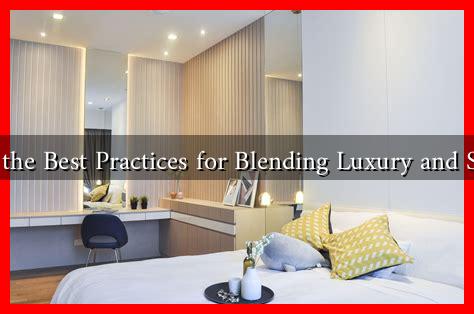-
Table of Contents
- What Are the Best Practices for Blending Luxury and Simplicity?
- Understanding Luxury and Simplicity
- Best Practices for Blending Luxury and Simplicity
- 1. Focus on Quality Over Quantity
- 2. Streamline the Customer Experience
- 3. Embrace Minimalism in Aesthetics
- 4. Communicate Value Clearly
- 5. Leverage Technology Wisely
- Conclusion
What Are the Best Practices for Blending Luxury and Simplicity?
In a world where consumer preferences are constantly evolving, the intersection of luxury and simplicity has become a focal point for brands aiming to attract discerning customers. The challenge lies in creating an experience that feels both opulent and uncomplicated. This article explores the best practices for blending luxury and simplicity, providing insights and examples that can guide brands in achieving this delicate balance.
Understanding Luxury and Simplicity
Before diving into best practices, it’s essential to define what luxury and simplicity mean in the context of consumer experiences:
- Luxury: Often associated with high-quality materials, exclusivity, and exceptional service, luxury evokes a sense of indulgence and prestige.
- Simplicity: Refers to a straightforward, uncluttered approach that prioritizes ease of use and accessibility, often leading to a more enjoyable experience.
When combined, these two concepts can create a unique value proposition that resonates with consumers seeking both quality and ease.
Best Practices for Blending Luxury and Simplicity
1. Focus on Quality Over Quantity
In luxury branding, less is often more. Brands should prioritize high-quality products and services rather than overwhelming consumers with options. For instance, the luxury fashion brand Chanel offers a curated selection of timeless pieces that embody elegance without excessive embellishment. This approach not only simplifies the shopping experience but also reinforces the brand’s commitment to quality.
2. Streamline the Customer Experience
A seamless customer experience is crucial in blending luxury and simplicity. This can be achieved through:
- Intuitive Design: Websites and physical stores should be designed for ease of navigation, allowing customers to find what they need without frustration.
- Personalized Service: High-end brands like Tiffany & Co. offer personalized shopping experiences, ensuring that customers feel valued and understood.
- Efficient Checkout Processes: Simplifying payment options and reducing wait times can enhance the luxury experience.
3. Embrace Minimalism in Aesthetics
Minimalist design can effectively convey luxury while maintaining simplicity. Brands like Apple exemplify this approach with their clean lines and uncluttered interfaces. By focusing on essential elements, brands can create an atmosphere of sophistication without overwhelming consumers.
4. Communicate Value Clearly
Luxury brands must articulate their value proposition in a straightforward manner. This involves:
- Transparent Messaging: Clearly communicate the benefits and features of products without jargon or unnecessary complexity.
- Storytelling: Use compelling narratives to connect with consumers emotionally, making the luxury experience relatable and accessible.
For example, Burberry effectively uses storytelling in its marketing campaigns, showcasing the heritage and craftsmanship behind its products.
5. Leverage Technology Wisely
Technology can enhance the luxury experience when used thoughtfully. Brands should consider:
- Augmented Reality (AR): Allowing customers to visualize products in their own space can simplify decision-making.
- Mobile Apps: Creating user-friendly apps that offer personalized recommendations can enhance customer engagement.
For instance, Louis Vuitton has integrated AR into its shopping experience, allowing customers to explore products in an innovative way.
Conclusion
Blending luxury and simplicity is not just a trend; it’s a strategic approach that can significantly enhance customer satisfaction and brand loyalty. By focusing on quality, streamlining the customer experience, embracing minimalism, communicating value clearly, and leveraging technology wisely, brands can create a compelling offering that resonates with today’s consumers. As the market continues to evolve, those who master this balance will undoubtedly stand out in a crowded landscape.

